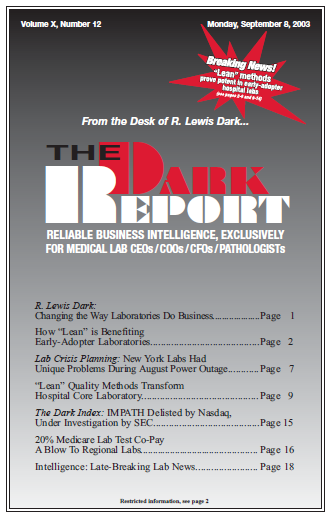WHEN THE POWER OUTAGE on August 14 hit states from New York to Michigan, the crisis plans of laboratories throughout the region were put to the test. For the most part, laboratories across this region were prepared and continued to deliver the most critical testing services. Even where operations were disrupted, once power was restored, …
NY Labs Had Unique Problems During August Power Outage Read More »
To access this post, you must purchase The Dark Report.


